Scones are such a joy to make that I couldn’t help but develop another scone recipe, this time featuring summer flavors. In this recipe, strawberries are dusted with sumac and sugar and roasted under low heat until their flavors are concentrated and some of their excess moisture has evaporated. The sweetness from the strawberries and pleasant zingy tang from the sumac pair perfectly with the buttery flavor of the scone for a delightful mid-afternoon snack.
Roasting the strawberries is an important step for these scones. The strawberries are coated with very little sugar, so as to prevent them from releasing all of their juices and becoming too jammy. Cooking them in the oven at a low temperature softens them slightly and reduces their moisture, preventing the scone from becoming too wet, while creating a strong, concentrated strawberry flavor.
Scones are incredibly therapeutic to make because they are entirely hands-on. While making scones, you need to be present with your dough, paying more attention to textural and visual clues than to the recipe–noticing the size and shape of the cold butter pieces as you smoosh them with your hands, checking the moisture level as you run the dough through your fingers and gently break up clumps, and feeling the temperature and texture as you subtly guide the dough together into a square. Because so much of making scones is about intuition and observation, I provide a rough guide to how much buttermilk use, but you’ll need to feel it out and gradually add more as needed until you hit the right balance where the dough is still relatively crumbly but when lightly pressed together, will hold its shape.
If you want more practice developing your scone intuition, check out some of my other scone recipes, including preserved lemon blueberry scones and apricot scones with rosemary and goat cheese.
Roasted strawberry sumac scones
Course: BreadDifficulty: Quick bake8
scones25
minutes80
minutesRoasted strawberries are sprinkled with sumac for a sweet and tangy flavor combination and generously folded into a buttery dough, creating the perfect scone. It’s sweet, zingy, fruity, and buttery all at once.
Ingredients
- For the strawberries
16 oz fresh strawberries, hulled and quartered
1 Tbsp granulated sugar
1 Tbsp ground sumac
- For the dough
2 cups (250g) all-purpose flour
1/3 cup (67g) granulated sugar
2 tsp baking powder
1 tsp baking soda
few turns of freshly ground black pepper
1 stick (1/2 cup) cold unsalted butter, cut into cubes
2/3 cup cold buttermilk
- Topping
1 Tbsp turbinado or granulated sugar
1/2 Tbsp ground sumac
Instructions
- Preheat the oven to 250F. Line a baking sheet with parchment paper or a silicone baking mat. Add the strawberries, sugar, and sumac and toss to coat evenly. Roast for at least one hour and up to one hour and twenty minutes, until the strawberries have softened and any liquids that they have released have thickened into a jammy texture. Stir a few times while baking. Let cool completely.
- In a large mixing bowl, stir together the flour, sugar, baking powder, baking soda, and black pepper. Add the cubed butter to the bowl, coat in the flour mixture, and working swiftly, flatten and smoosh the butter pieces between your fingers. You’ll still have some slightly larger butter pieces in the mixture which is fine, as long as they’ve all been somewhat flattened.
- Add about 1/2 cup of the buttermilk and incorporate gently with a fork until you have a very shaggy dough that still has some large dry patches of flour. Empty the bowl out onto a work surface and spread it out so you can see the clumps and dry areas well, using your fingers to break up a few of the giant clumps that may have formed.
- Sprinkle the strawberries on top, reserving a handful of the strawberries for later. Gently toss the mixture with your hands, letting the dough pass between your fingers like a pair of salad tongs. You can gently break up some of the large clumps. Pat the dough into a rough square shape, using a bench scraper or one of your hands and pressing the dough against it to form your edges. At this point, the dough will still be quite unevenly hydrated but if it is very crumbly and won’t hold a shape, add a little bit more buttermilk, no more than 1 tablespoon at a time and lightly toss with your hands again to distribute and press back into a square.
- Cut the dough in half and stack one half on top of the other. Gently pat down with your hands to bring the pieces together. Rotate 90 degrees, cut in half again, and pat down. Repeat another 1-2 times–the dough will start becoming more evenly hydrated as you do this. Don’t overwork the dough–just pat the dough down a few times, not worrying if it’s still a bit shaggy or misshapen. Your dough will NOT be completely smooth and that’s a good thing. Pat together into a final square that’s about 1/2 inch thick. If needed, you can lightly use a rolling pin to thin the dough out to 1/2 an inch. If the dough starts feeling warm or the butter is getting greasy, immediately refrigerate the dough for a few minutes and come back to it once it has cooled down. Press the remaining strawberries into the top of the dough.
- Cut the square in half vertically and then again horizontally. Then cut each of those in half diagonally to form 8 triangles in total.
- Transfer to a baking sheet lined with parchment paper and refrigerate for at least 30 minutes.
- Preheat the oven to 425F. In a small dish, mix 1 tablespoon of sugar with 1/2 tablespoon of sumac. Brush the tops of the scones with buttermilk and sprinkle with the sugar mixture.
- Bake for about 20 minutes or until golden brown, rotating once halfway through baking. Let cool until the bottoms are only slightly warm. These scones are definitely best served the same day they’re made but will keep in an airtight container for another couple of days.
Notes
- The ingredient list includes 2/3 cup of buttermilk to make sure you have enough for the recipe. You likely will not need the full 2/3 cup for the dough so start with using 1/2 cup and add small amounts more if needed based on how your dough feels.


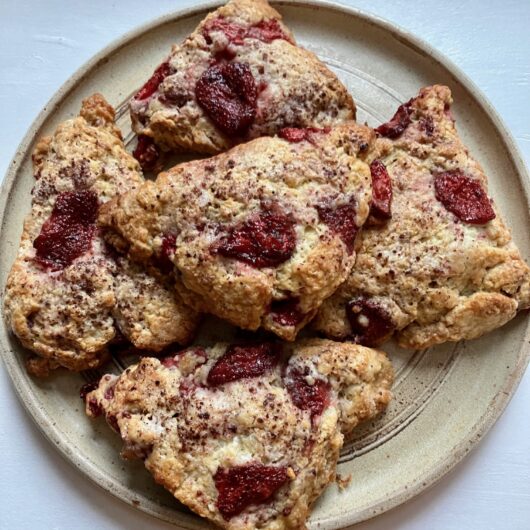
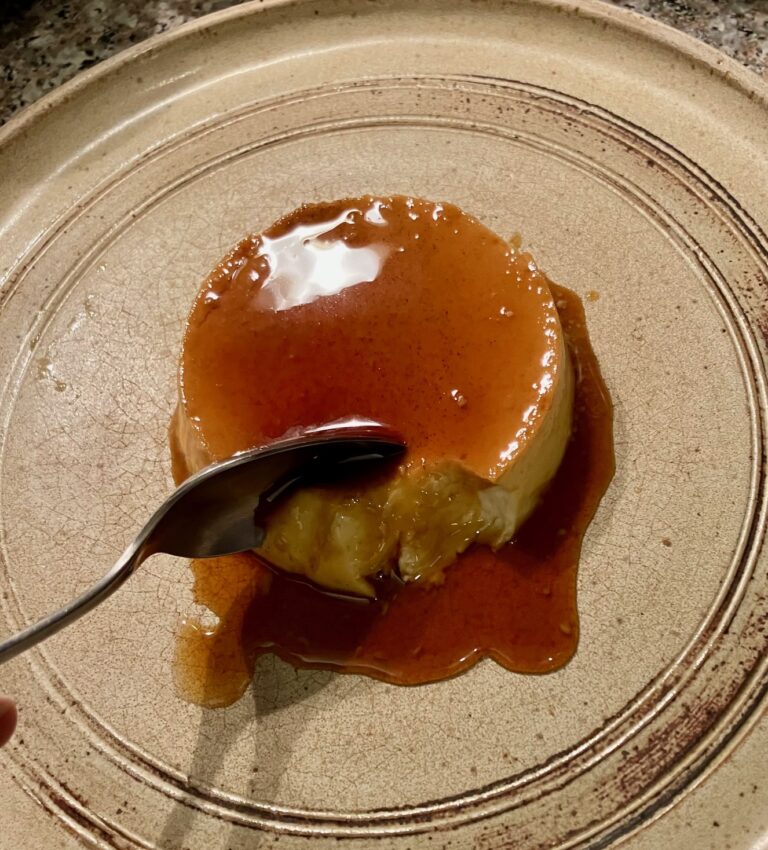


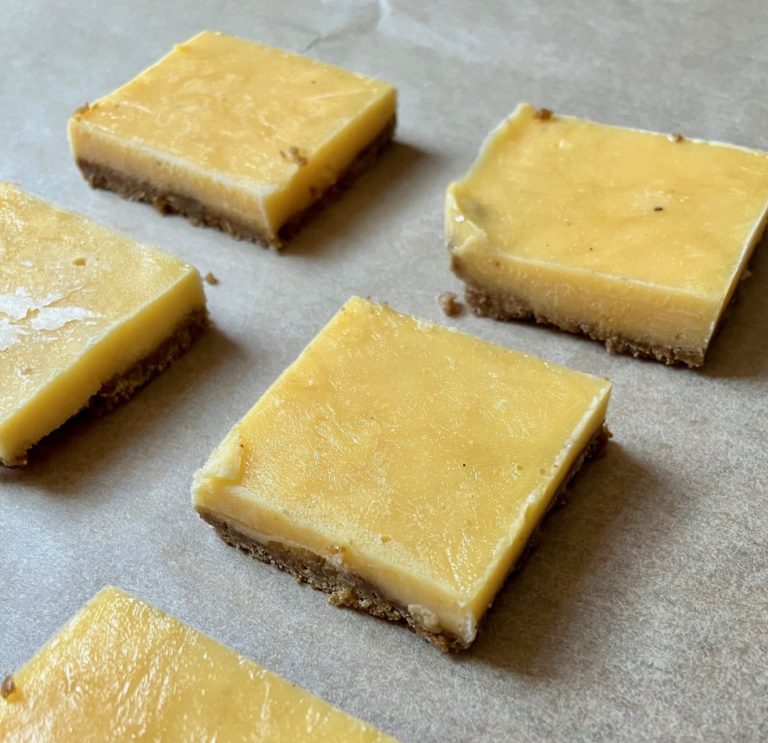
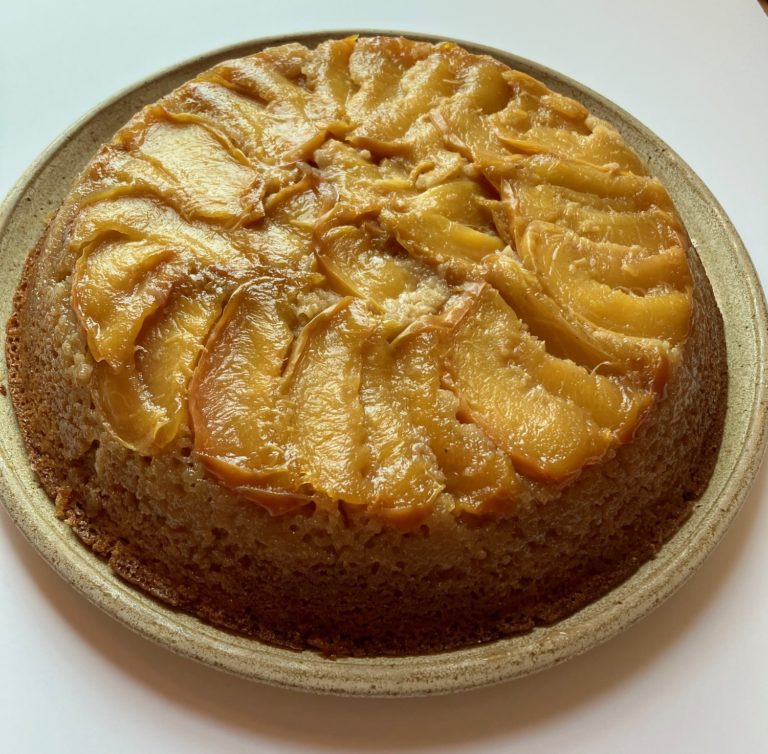
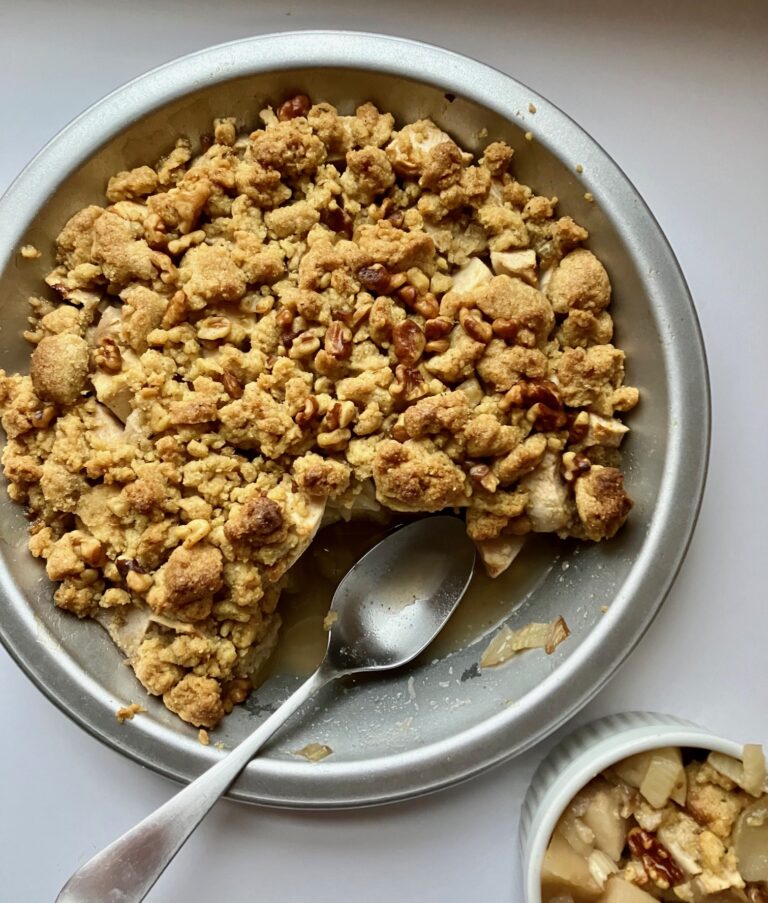
Leave a comment